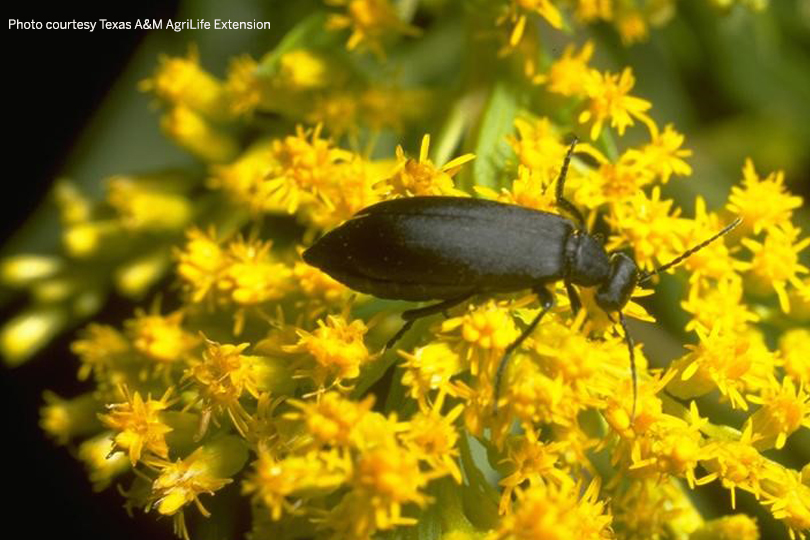By Shelby Shank
Field Editor
Blister beetles in hay can pose a threat to horses and livestock, and farmers and ranchers should be on the lookout for the beetles in hay they cut or purchase.
Blister beetles contain a toxic chemical, cantharidin, that can lead to severe symptoms or death in animals.
The beetles are commonly found in blooming alfalfa fields and get trapped in hay. The insect is crushed by the hay crimper during bailing and remains in the hay, said Dr. Bob Judd, host of Texas Vet News on the Texas Farm Bureau Radio Network.
Judd noted adult blister beetles are attracted to blooming alfalfa fields containing golden rods and dandelions.
If the beetles remain in the hay during consumption, horses can develop severe inflammation, along with ulcers in their mouth, irritation of the gastrointestinal tract and painful urination.
“Many horses will develop severe colic and have to be euthanized due to the pain,” Judd said.
Cattle and sheep are more tolerant of the toxin than horses but are still susceptible to threats.
The beetles tend to swarm in fields and can be present in some hay bales but not all.
“It is critical to examine the hay for the presence of blister beetles before feeding,” Judd said. “This is one reason why alfalfa fed to horses in Texas comes from out of state because some states have less blister beetles than we do in Texas.”
Cutting hay with a disc cutter doesn’t crimp the hay, which is helpful in minimizing the appearance of the beetles. The disc cutter allows the insect to fly out of the hay after cutting and for the hay to dry out before raking. If the beetles are crushed in the hay, their remnants with the toxins remain in the hay.
“To decrease the chance of blister beetles, control blooming weeds near alfalfa fields and cut alfalfa at 10% less bloom or late in the season,” Judd said.
He recommends checking hay fields 24 hours prior to cutting to ensure blister beetles have not moved in.
To hear more Texas Vet News programs, visit texasfarmbureau.org/radio.

